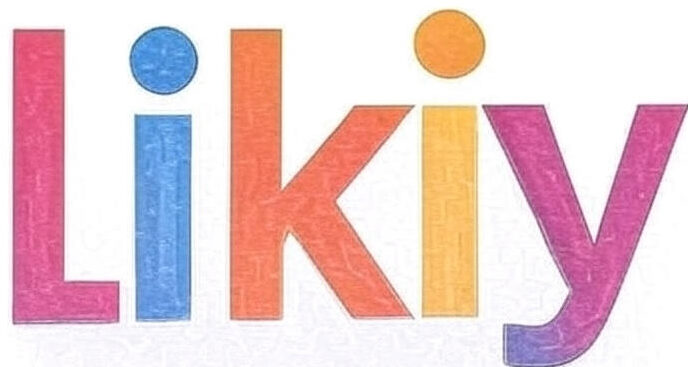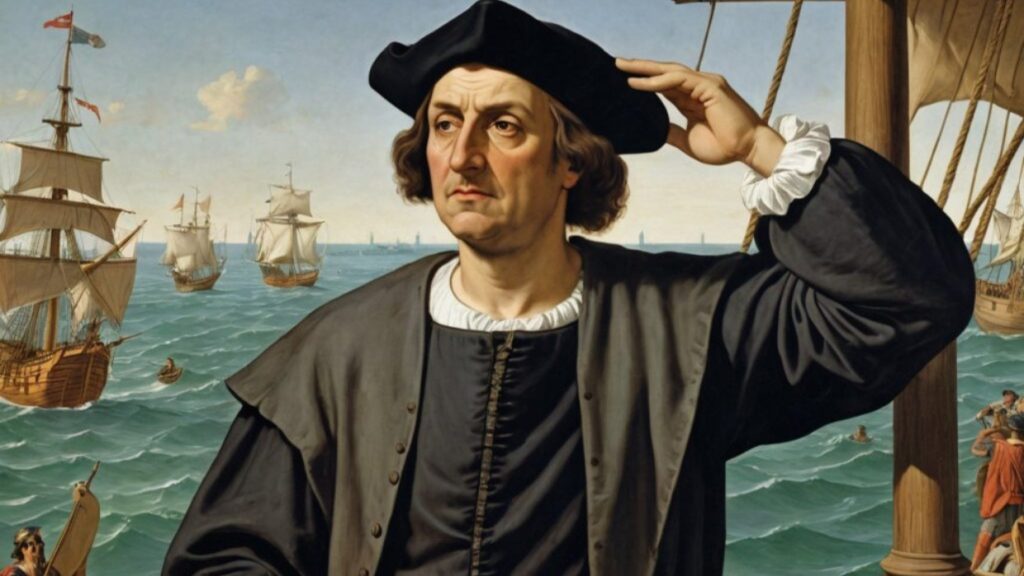Introduction: Columbus Day
Columbus Day is a United States federal holiday that commemorates the historic landing of Christopher Columbus in the Americas on October 12, 1492. It is observed each year on the second Monday of October and marks what is often seen as the beginning of a new era of exploration and cultural exchange between Europe and the Americas. Columbus, an Italian navigator sailing under the Spanish flag, set out to find a new trade route to Asia but instead came upon islands in the Caribbean, changing the course of world history forever. His voyage opened the way for centuries of exploration, migration, and cultural interaction that shaped the modern world.
The origins of Columbus Day as a celebration date back to 1792, when the Columbian Order (Tammany Society) in New York City held the first recorded ceremony marking the 300th anniversary of Columbus’s landing. Over the next century, the holiday gained popularity, especially among Italian-American communities, who viewed Columbus as a symbol of pride, achievement, and contribution to the broader American story.
In 1937, President Franklin D. Roosevelt officially declared Columbus Day a national holiday, following years of advocacy by the Knights of Columbus, a Catholic organization that regarded Columbus as a heroic figure representing courage, exploration, and faith. Later, in 1971, the date was permanently moved to the second Monday in October under the Uniform Monday Holiday Act, allowing for a three-day weekend for federal employees and workers across the country.
Traditionally, Columbus Day has been celebrated with parades, festivals, and educational programs highlighting Italian culture and history. Major cities such as New York and San Francisco host large-scale parades that showcase music, art, and cuisine reflecting Italian-American heritage. Schools often use the day to teach about Columbus’s voyages and their impact on world history.
However, in recent decades, the holiday has become a topic of growing controversy and reexamination. Critics argue that while Columbus’s journey was historically significant, it also marked the beginning of European colonization, which brought suffering, enslavement, and disease to Indigenous peoples who had already inhabited the Americas for thousands of years. Many Native American groups and their supporters advocate replacing Columbus Day with Indigenous Peoples’ Day, a holiday that honors the history, culture, and resilience of the continent’s original inhabitants. As a result, several U.S. states and cities now officially recognize Indigenous Peoples’ Day instead, while others observe both holidays side by side.
Today, Columbus Day stands as a complex and thought-provoking occasion. For some, it symbolizes discovery, exploration, and cultural heritage, particularly within the Italian-American community. For others, it is a time for reflection, awareness, and acknowledgment of the painful legacies of colonialism. Whether celebrated as Columbus Day or Indigenous Peoples’ Day, the holiday continues to inspire discussion about the meaning of history, the diversity of cultures, and the shared journey of humanity through time.
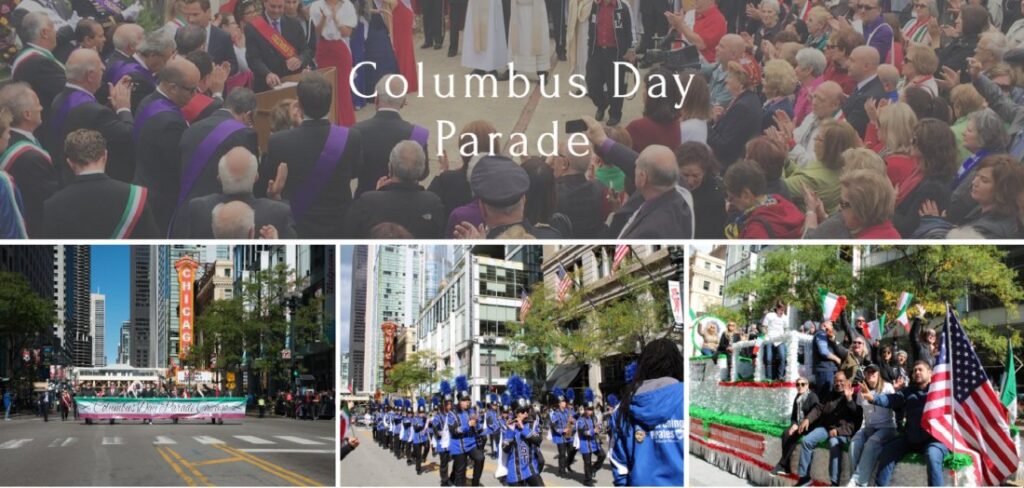
The Historical Background: Christopher Columbus and His Voyages
To understand Columbus Day, one must first grasp the life and expeditions of Christopher Columbus himself. Born in Genoa, Italy, around 1451, Columbus was a navigator and explorer who sought a western sea route to Asia, believing it would be shorter than the existing paths around Africa. Sponsored by the Spanish monarchs Ferdinand II of Aragon and Isabella I of Castile, he embarked on his first voyage in 1492 with three ships: the Niña, the Pinta, and the Santa María.
On October 12, 1492, after a arduous journey across the Atlantic Ocean, Columbus and his crew sighted land in what is now the Bahamas. He named the island San Salvador and claimed it for Spain, mistakenly believing he had reached the East Indies. This encounter initiated a series of interactions between Europeans and the indigenous peoples of the Americas, including the Taíno people. Columbus’s journals describe the islands as paradisiacal, with inhabitants who were peaceful and generous, though he also noted their potential for subjugation and conversion to Christianity.
Columbus made three more voyages between 1493 and 1504, exploring parts of the Caribbean, Central America, and South America. During these trips, he established settlements, such as La Navidad in present-day Haiti, and encountered various indigenous groups. However, his expeditions were marred by challenges, including shipwrecks, mutinies, and conflicts with native populations. Columbus’s governance as viceroy of the newly claimed territories was criticized for brutality, leading to his arrest and return to Spain in chains in 1500. He died in 1506, still convinced he had found a route to Asia.
The impact of Columbus’s voyages was immense. They opened the door to the Columbian Exchange, a widespread transfer of plants, animals, diseases, and cultures between the Old World and the New. Crops like potatoes, tomatoes, and maize revolutionized European agriculture, while horses, cattle, and wheat transformed the Americas. However, this exchange also brought devastating diseases such as smallpox, which decimated indigenous populations, reducing them by an estimated 90% in some areas within a century.
Historians debate Columbus’s role: some view him as a visionary explorer who bridged two worlds, while others see him as a harbinger of conquest and exploitation. His actions, including the enslavement of indigenous people and the initiation of the transatlantic slave trade, laid the groundwork for centuries of colonialism. These voyages not only redrew maps but also reshaped economies, societies, and ecosystems on a global scale.
The Establishment of Columbus Day as a Holiday
The origins of Columbus Day as a holiday trace back to the late 18th century in the United States. The first recorded celebration occurred in 1792 in New York City, marking the 300th anniversary of Columbus’s landing. Organized by the Tammany Society, also known as the Columbian Order, the event featured parades and speeches honoring the explorer as a symbol of progress and discovery.
Throughout the 19th century, Italian immigrants faced discrimination in the U.S., often stereotyped and marginalized. Columbus, as an Italian figure who “discovered” America, became a rallying point for Italian-American pride. In 1866, Italian communities in New York held one of the earliest annual Columbus Day parades. The push for national recognition intensified after the 1891 lynching of 11 Italian-Americans in New Orleans, one of the largest mass lynchings in U.S. history. This tragedy highlighted anti-Italian sentiment and spurred efforts to integrate Italians into American society.
The turning point came in 1892, the 400th anniversary of Columbus’s voyage. President Benjamin Harrison issued a proclamation encouraging Americans to celebrate the day with patriotic festivities, emphasizing education about the discovery. Massive events, including the World’s Columbian Exposition in Chicago in 1893 (delayed from 1892), showcased technological and cultural achievements, further embedding Columbus in the national narrative.
In the early 20th century, Italian-American organizations like the Knights of Columbus lobbied for federal recognition. Their efforts culminated in 1934 when President Franklin D. Roosevelt proclaimed Columbus Day a national holiday, effective from 1937. Initially observed on October 12, it was moved to the second Monday in October in 1971 under the Uniform Monday Holiday Act to create a three-day weekend, boosting commerce and travel.
Columbus Day’s establishment reflected broader themes of immigration and assimilation. For Italian-Americans, it affirmed their contributions to the nation. However, it also perpetuated a Eurocentric view of history, often overlooking the perspectives of indigenous peoples who inhabited the Americas long before 1492.
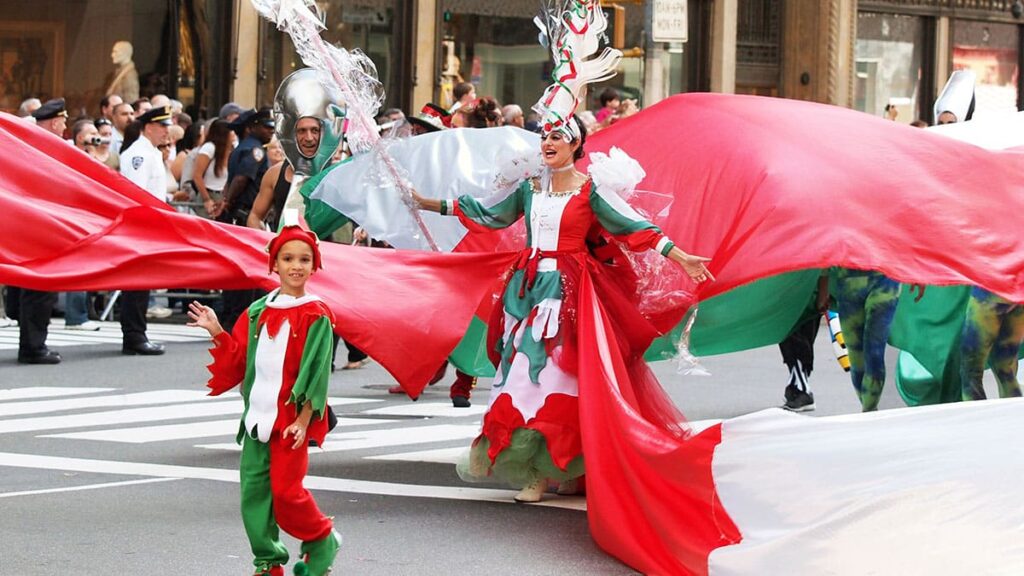
Celebrations and Traditions
Columbus Day celebrations vary across the United States, blending historical reenactments, cultural festivals, and community events. The most iconic tradition is the parade, with New York City’s Columbus Day Parade being the largest and oldest, dating back to 1929. Organized by the Columbus Citizens Foundation, it features marching bands, floats depicting Columbus’s ships, Italian folk dancers, and dignitaries along Fifth Avenue. Attended by over a million people, it celebrates Italian heritage with music, food, and pageantry.
In Chicago, the parade includes elaborate floats and performances, often highlighting Italian-American achievements in arts, science, and business. San Francisco’s Italian Heritage Parade, one of the oldest in the nation, incorporates a blessing of the fishing fleet, nodding to the city’s maritime history and Italian roots.
Schools and educational institutions use the day to teach about exploration and geography. Lessons might include map-making activities, discussions on navigation, or reenactments of Columbus’s voyages. Public institutions like libraries and museums host exhibits on the Age of Discovery, showcasing artifacts from the era.
In Italian-American communities, family gatherings feature traditional meals such as pasta, antipasti, and cannoli, emphasizing cultural pride. Some cities hold wreath-laying ceremonies at Columbus statues, symbolizing respect for the explorer’s legacy.
Federally, the day is marked by presidential proclamations, as seen in 2025 when the White House issued a statement defending Columbus against efforts to “erase” history. Banks, post offices, and government buildings close, while retail sales and promotions capitalize on the long weekend.
Internationally, similar holidays exist in Latin America as Día de la Raza or Día de la Hispanidad, focusing on cultural fusion rather than discovery. In Italy, it’s not a major holiday, but Genoa honors its native son with events.
These traditions underscore Columbus Day’s role in fostering community and heritage, yet they increasingly intersect with protests and alternative observances.
Controversies and Criticisms
Columbus Day has long been a source of contention, particularly regarding its portrayal of history. Critics argue that celebrating Columbus glorifies colonialism, genocide, and the enslavement of indigenous peoples. Upon arrival, Columbus documented plans to subjugate natives, and his administration in Hispaniola involved forced labor and brutal punishments, contributing to the rapid decline of the Taíno population through disease, warfare, and exploitation.
American anthropologist Jack Weatherford has described Columbus Day as a celebration of “the greatest waves of genocide of the American Indians known in history.” This perspective gained traction in the late 20th century amid civil rights movements and indigenous activism. The 1992 quincentennial sparked widespread protests, with groups like the American Indian Movement (AIM) decrying the holiday as a symbol of oppression.
Controversies extend to historical inaccuracies: Columbus did not “discover” America, as millions of indigenous people already lived there, and Vikings had reached North America centuries earlier. Moreover, his voyages initiated the transatlantic slave trade, with Columbus himself shipping indigenous people to Spain as slaves.
In recent years, vandalism of Columbus statues has highlighted these tensions. Cities like Boston and Richmond have removed monuments, viewing them as offensive. The debate intensified under political administrations; for instance, in 2025, proclamations from figures like President Trump (noting the date) defended Columbus against “vicious” campaigns to slander history, while others advocate for reevaluation.
Supporters counter that Columbus represents courage and innovation, and the holiday honors Italian-American contributions amid historical discrimination. They argue that judging historical figures by modern standards is anachronistic and that the day promotes unity.
These debates reflect broader discussions on historical memory, with calls for education that includes multiple perspectives rather than erasure.
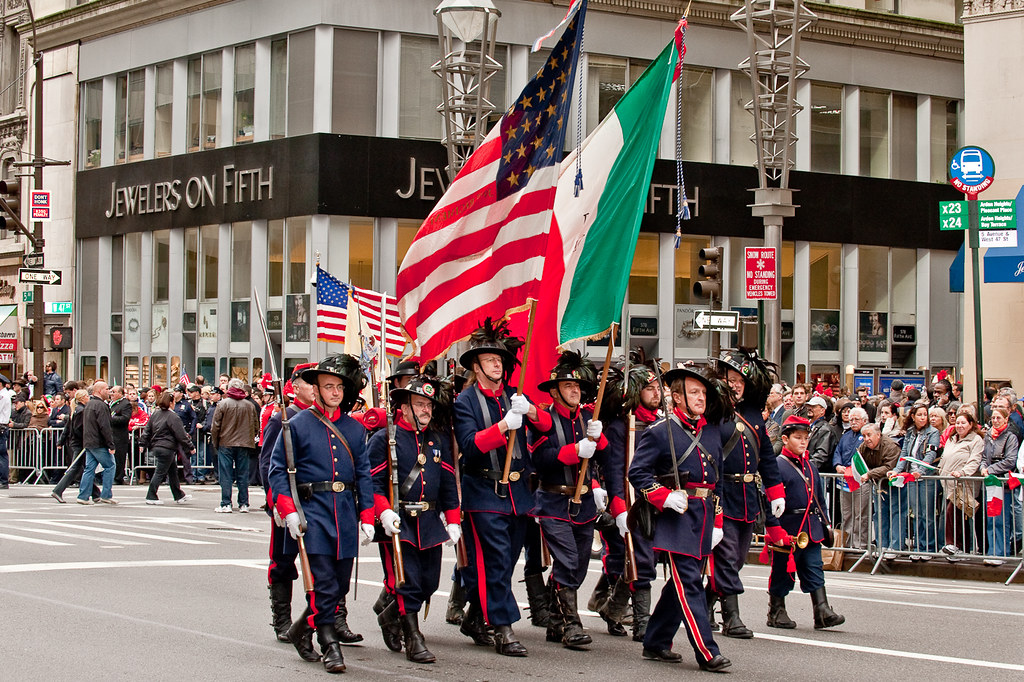
The Shift to Indigenous Peoples’ Day
In response to controversies, many jurisdictions have replaced or supplemented Columbus Day with Indigenous Peoples’ Day. This alternative holiday honors the resilience, cultures, and contributions of Native American peoples, shifting focus from conquest to indigenous heritage.
The movement began in 1977 at a United Nations conference on discrimination against indigenous populations. Berkeley, California, became the first city to adopt Indigenous Peoples’ Day in 1992, coinciding with the quincentennial. Since then, over 100 cities and several states, including Alaska, Minnesota, and Oregon, have followed suit.
On the federal level, President Joe Biden issued proclamations recognizing both days, acknowledging indigenous histories while maintaining Columbus Day. In Michigan, for example, October 13, 2025, marks Indigenous Peoples’ Day alongside the federal Columbus Day, featuring events like powwows, art exhibits, and educational panels on native sovereignty.
Celebrations include cultural demonstrations, storytelling, and advocacy for issues like land rights and environmental protection. This shift aims to rectify historical narratives, promoting inclusivity and awareness of ongoing indigenous challenges, such as poverty and cultural preservation.
However, the transition is not uniform; some states retain Columbus Day exclusively, leading to patchwork observances. This duality underscores America’s diverse views on history.
Current Status in 2025 and Future Outlook
As of October 13, 2025, Columbus Day remains a federal holiday, observed by closures and official recognitions. Yet, its observance is increasingly polarized. In major cities, parades proceed amid protests, with security measures to prevent disruptions. Educational curricula are evolving, incorporating critical views on colonialism.
The 2025 proclamations highlight ongoing debates, with some leaders emphasizing defense of traditional history against revisionism. Meanwhile, indigenous advocacy groups push for national recognition of Indigenous Peoples’ Day, supported by growing public awareness through media and social movements.
Looking ahead, Columbus Day’s future may involve hybrid observances or rebranding to emphasize exploration without glorifying conquest. Proposals include Italian Heritage Day or Explorers’ Day to decouple from controversies while preserving cultural elements.
Ultimately, the holiday serves as a mirror to society’s values, prompting reflection on how we commemorate the past.
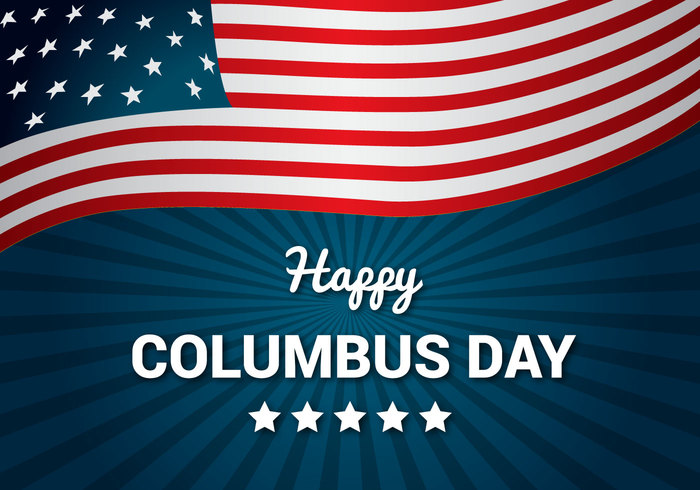
When will Columbus Day be celebrated in the next 10 Years?
| Year | Holiday | Day of the week | Date |
|---|---|---|---|
| 2024 | Columbus Day | Monday | October 14, 2024 |
| 2025 | Columbus Day | Monday | October 13, 2025 |
| 2026 | Columbus Day | Monday | October 12, 2026 |
| 2027 | Columbus Day | Monday | October 11, 2027 |
| 2028 | Columbus Day | Monday | October 9, 2028 |
| 2029 | Columbus Day | Monday | October 8, 2029 |
| 2030 | Columbus Day | Monday | October 14, 2030 |
| 2031 | Columbus Day | Monday | October 13, 2031 |
| 2032 | Columbus Day | Monday | October 11, 2032 |
| 2033 | Columbus Day | Monday | October 10, 2033 |
| 2034 | Columbus Day | Monday | October 9, 2034 |
| 2035 | Columbus Day | Monday | October 8, 2035 |
Summary of Christopher Columbus
Born: 1451, Genoa, Italy Died: May 20, 1506, Valladolid, Spain Occupation: Explorer, navigator, colonizer Known For: Four transatlantic voyages (1492–1504) that initiated European exploration and colonization of the Americas, mistakenly seeking a western route to Asia.
Key Voyages:
- 1492–1493: Landed in the Bahamas (named San Salvador), Cuba, and Hispaniola; established La Navidad; returned with gold and captives.
- 1493–1496: Colonized Hispaniola (La Isabela); explored Lesser Antilles, Puerto Rico, Jamaica; imposed harsh tribute systems, leading to indigenous deaths.
- 1498–1500: Discovered South American mainland (Venezuela); faced rebellion and arrest for mismanagement in Hispaniola.
- 1502–1504: Explored Central America; stranded in Jamaica; mapped coastlines but failed to find Asia.
Impact:
- Columbian Exchange: Introduced crops (e.g., maize, potatoes), animals, and diseases (e.g., smallpox) between Old and New Worlds, transforming global economies and populations.
- Colonization: Sparked Spanish conquest and settlement, reshaping the Americas.
- Controversies: Enslavement, violence, and exploitation of indigenous peoples (e.g., Taino population decimated); modern debates over his legacy led to reevaluation of Columbus Day.
Legacy: Celebrated as a pioneering explorer in traditional narratives but increasingly criticized for atrocities. Many regions now honor Indigenous Peoples’ Day to acknowledge native perspectives.
If you’d like details on a specific voyage, his navigational methods, interactions with indigenous groups, or modern controversies, let me know! Alternatively, I can provide a chart comparing the outcomes of his voyages or analyze a specific source for more context.
Conclusion
Columbus Day encapsulates a pivotal moment in history—the collision of worlds that forever altered humanity’s trajectory. From Columbus’s daring voyages to the establishment of a national holiday amid immigration waves, it has symbolized discovery and heritage. Celebrations like parades and family gatherings foster community, while controversies highlight the painful legacies of colonization and genocide.
As perspectives evolve, the rise of Indigenous Peoples’ Day offers a counter-narrative, honoring those marginalized by history. In 2025, this duality invites deeper dialogue on reconciliation and truth-telling. By understanding the full spectrum—triumphs, tragedies, and transformations—we can appreciate the complexity of our shared past and chart a more equitable future.
